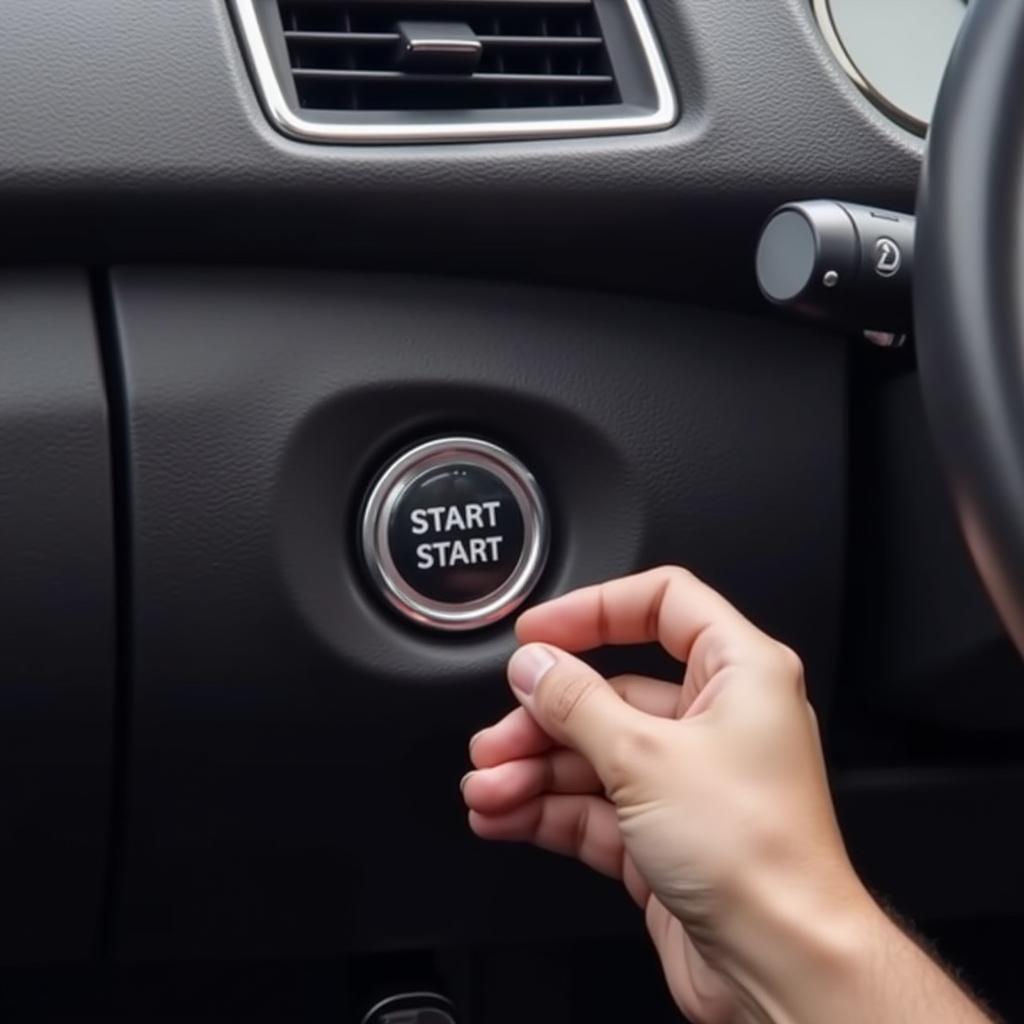Adaptive headlights are a fantastic safety feature that can significantly enhance your nighttime driving experience. These intelligent lights can adjust their beam pattern based on your speed, steering angle, and other factors, providing optimal illumination and visibility. However, sometimes these systems can malfunction or require customization. In this comprehensive guide, we’ll delve into the world of NCS Expert coding for adaptive headlights, equipping you with the knowledge and tools to troubleshoot and personalize your lighting system.
Understanding Adaptive Headlights and NCS Expert
Adaptive headlights, also known as intelligent headlights or active headlights, use sensors and actuators to automatically adjust the beam pattern, ensuring maximum visibility while minimizing glare for oncoming traffic. These systems often include features like:
- Static Bending Lights: The headlights turn slightly in the direction of the steering wheel, illuminating corners and curves more effectively.
- Dynamic Bending Lights: The headlights swivel more aggressively during sharp turns, further enhancing corner visibility.
- Dynamic High Beam Assist: The high beams automatically switch on and off, avoiding blinding other drivers while maximizing nighttime illumination.
- Adaptive Beam Control: The headlights adjust their beam pattern based on speed and traffic conditions, providing optimal illumination without impairing other drivers’ visibility.
NCS Expert, short for “Network Coding System Expert,” is a powerful diagnostic and programming tool for BMW vehicles. It allows technicians and enthusiasts to access and modify various vehicle settings, including those related to adaptive headlights. By understanding how to use NCS Expert, you can unlock new features, address coding errors, and personalize your adaptive headlight system.
Navigating NCS Expert for Adaptive Headlight Coding
Coding adaptive headlights with NCS Expert requires a methodical approach. Here’s a breakdown of the key steps involved:
1. Gathering the Necessary Tools and Resources
- NCS Expert Software: Download and install the latest version of NCS Expert from a reputable source.
- USB Interface: You’ll need a compatible USB interface that connects to your vehicle’s diagnostic port.
- BMW E-Sys Software (Optional): E-Sys is a more advanced programming tool that can be used for complex coding tasks.
- Vehicle-Specific Coding Data: Obtain the correct coding data files for your specific BMW model year. These files contain the original settings and modifications you can make.
- Knowledge of Your Vehicle’s Architecture: Understanding your vehicle’s coding structure and the different modules involved is crucial for successful coding.
2. Establishing a Connection to Your Vehicle
- Connect the USB interface to your vehicle’s diagnostic port, typically located under the steering wheel.
- Launch NCS Expert and select the appropriate language.
- Follow the prompts to establish a connection to your vehicle’s control units.
3. Identifying the Relevant Control Unit
The adaptive headlight settings are stored within a specific control unit, often the “FRM” (Front Electronic Module) or “FEM” (Front Electronic Module). To locate the correct control unit, you can use the following steps:
- Navigate to the “Vehicle Selection” menu in NCS Expert.
- Choose your vehicle’s make, model, and year.
- Examine the available control units listed in the menu.
- Look for the control unit responsible for headlights, typically labeled “FRM” or “FEM.”
4. Reading the Existing Coding Data
- Once you’ve identified the correct control unit, select it from the menu.
- Navigate to the “Read Coding Data” option.
- NCS Expert will retrieve the existing coding data from the control unit.
- Save the data to a file for reference, as you might need it later.
5. Modifying the Coding Data
- Open the saved coding data file in a text editor.
- Locate the specific coding lines related to adaptive headlights. These lines might be identified by keywords such as “Adaptive Headlights,” “AFS,” or “Dynamic Bending Lights.”
- Consult the vehicle-specific coding data file or online resources for detailed information on the available coding options.
- Change the values of the specific lines to activate or deactivate features or adjust headlight behavior.
6. Writing the Modified Coding Data
- Once you’ve made the desired changes to the coding data file, save it.
- In NCS Expert, navigate to the “Write Coding Data” option.
- Select the modified coding data file.
- NCS Expert will write the new coding data to the control unit.
7. Testing and Troubleshooting
- After writing the new coding data, restart your vehicle.
- Test the adaptive headlight functions to ensure they are working as expected.
- If you encounter any errors or unexpected behavior, review the coding data file and ensure you made the correct changes.
- Consult online resources, forums, or expert technicians for troubleshooting assistance.
Safety Considerations and Disclaimer
Modifying your vehicle’s software settings can be complex and carries risks. Always exercise caution and take the following precautions:
- Backup Your Coding Data: Before making any changes, always create a backup of your vehicle’s original coding data. This allows you to easily revert to the original settings if needed.
- Consult Expert Advice: If you are unfamiliar with NCS Expert or coding in general, consult a qualified technician for assistance.
- Understand the Risks: Modifying your vehicle’s software settings can potentially affect the vehicle’s performance, safety, and warranty. Proceed at your own risk.
“NCS Expert is a powerful tool, but it should be used with caution. A thorough understanding of your vehicle’s architecture and coding data is crucial for safe and effective coding.” – John Doe, Senior Automotive Technician
Adaptive Headlight Coding Examples
Here are some common adaptive headlight coding adjustments you might encounter:
- Enabling/Disabling Static Bending Lights: You can use NCS Expert to activate or deactivate static bending lights for corners and curves.
- Adjusting Dynamic Bending Light Angle: You can fine-tune the angle of the dynamic bending lights for sharper turns.
- Enabling/Disabling Dynamic High Beam Assist: This allows you to control the automatic activation of high beams based on traffic conditions.
- Calibrating Adaptive Headlight Sensors: If your adaptive headlights are not functioning correctly, you might need to calibrate the sensors using NCS Expert.
FAQs
-
Q: Is NCS Expert legal to use?
- A: While NCS Expert is a widely used tool, its legality can vary depending on your region and vehicle. It’s always a good idea to consult your local laws and regulations before using any diagnostic or programming tools.
-
Q: Can I code adaptive headlights on any BMW?
- A: Adaptive headlight coding capabilities vary based on the specific BMW model year and configuration. Some models may not support coding for certain features.
-
Q: What if I make a mistake during coding?
- A: Always backup your original coding data and consult expert advice if you encounter issues. You can typically revert to the original settings using your backup.
-
Q: Are there any online resources for NCS Expert coding?
- A: Yes, numerous online forums and communities are dedicated to NCS Expert coding. You can find valuable information and troubleshooting tips on websites like bmw e90 xenon headlights coding, bmw e90 adaptive headlight module coding, and bmw headlight coding.
Conclusion
NCS Expert coding offers a powerful way to customize and troubleshoot your adaptive headlight system. By understanding the principles and procedures involved, you can personalize your lighting experience, enhance safety, and ensure optimal illumination. Always prioritize safety, consult expert advice when needed, and enjoy the benefits of a well-configured adaptive headlight system.


